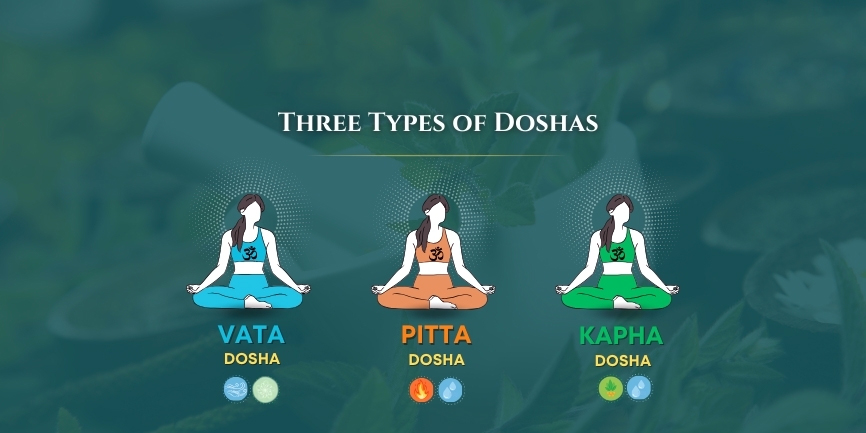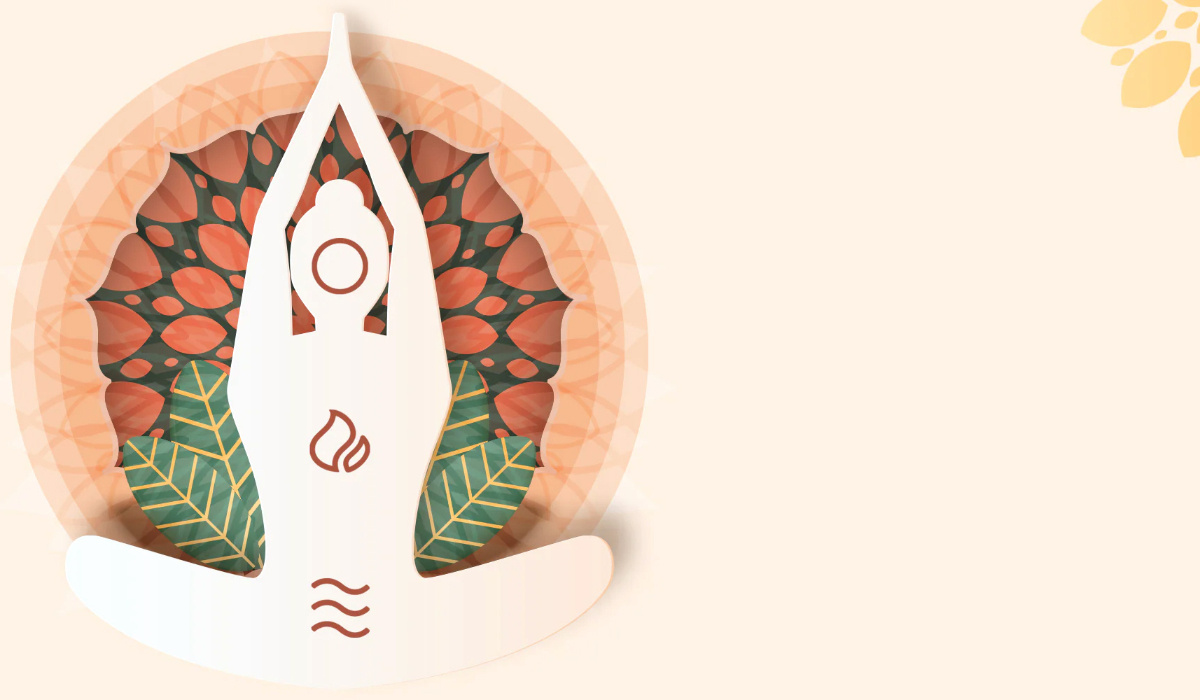Which Dosha Are You Messing Up? Here's How to Fix It!
In the ancient science of Ayurveda, the concept of balance is at the core of good health and well-being. According to this philosophy, every individual is made up of a unique combination of three fundamental energies known as Doshas: Vata (air + ether), Pitta (fire + water), and Kapha (earth + water). These doshas govern our physical, mental, and emotional traits and when they're in harmony, we feel vibrant, calm, and energized. But when they’re out of sync? That’s when we experience issues like fatigue, irritability, digestion problems, or even mood swings. Through mindful diet choices, lifestyle habits, and specific yoga practices, it’s possible to bring each dosha back into balance.
Let’s explore how to recognize signs of imbalance in each dosha and how to tailor your yoga routine and daily habits to maintain equilibrium.
Balancing Vata (Air and Ether):
Diet: Vata-balancing foods are warm, heavy, moist, and cooked. Examples include warm milk, soups, and cooked grains.
Lifestyle: Regular routines, sufficient sleep, and grounding activities like yoga and meditation are helpful.
Avoid: Cold, dry, raw, and processed foods.
Balancing Pitta (Fire and Water):
Diet: Pitta-balancing foods are cooling, soothing, and easily digestible. Fruits, vegetables, and light meals are recommended.
Lifestyle: Gentle Yoga exercise, meditation, and spending time in nature can be beneficial.
Avoid: Hot, spicy, oily, and acidic foods.
Balancing Kapha (Earth and Water):
Diet: Kapha-balancing foods are light, warm, and dry. dry fruits, grains, and some spices are suitable.
Lifestyle: Regular Yoga exercise, including vigorous activities like running or hiking, can be helpful.
Avoid: Heavy, oily, and cold foods.
Yoga for Balancing The Three Doshas
Balancing the three doshas, Vata, Pitta, and Kapha through yoga involves choosing specific asanas, pranayama, and meditation techniques that bring each dosha back into harmony. Here’s a concise guide:
Vata Balancing Yoga:
Qualities: Cold, dry, light, mobile (air + space)
Imbalance signs: Anxiety, restlessness, dry skin, insomnia
Yoga focus: Grounding, warming, slow, calming
Recommended Asanas
- Child’s Pose (Balasana): Sit on your heels, fold forward with your arms stretched in front or beside you, forehead on the mat. This deeply relaxing posture brings a sense of safety, stillness, and calm, perfect for Vata’s restless energy.
- Cat-Cow (Marjaryasana/Bitilasana): Start on all fours. Inhale to arch your spine (Cow), exhale to round it (Cat). This posture encourages fluid motion in the spine and syncs breath with movement, balancing Vata’s airy mobility with grounding rhythm.
- Forward bends (Paschimottanasana): Sit with legs straight, inhale to lengthen the spine, exhale and fold forward. This posture calms the mind, reduces anxiety, and stretches the back body, bringing inward focus.
- Bridge Pose (Setu Bandhasana): Lie on your back, bend knees, feet on the floor, lift hips upward. This posture stabilizes the lower body and activates the root chakra, grounding Vata energy.
Pranayama:
- Alternate Nostril Breathing (Anulom Vilom)
- Bhramari (Bee Breath)
- Deep belly breathing
Meditation:
- Grounding body scans
- Chanting “Lam” (Root chakra)
Pitta Balancing Yoga:
Qualities: Hot, sharp, intense (fire + water)
Imbalance signs: Irritability, inflammation, anger, ulcers
Yoga focus: Cooling, soothing, non-competitive
Recommended Asanas
- Moon Salutations (Chandra Namaskar): How: A series of postures like side stretches, low lunges, and gentle folds performed in a flowing sequence. This posture softens intensity and cools down excess heat in the body and mind.
- Supine poses (Supta Baddha Konasana): Lie on your back, bring soles of feet together, knees falling out to the sides. Support with pillows if needed. This posture opens the heart, calms the digestive fire, and induces relaxation.
- Seated forward bends: Sit with legs extended or crossed, fold forward gently. This posture encourages introspection and cools down mental and physical tension.
- Spinal twists: Sit upright, bend one knee over the opposite leg, and twist your torso. This posture detoxifies the liver and balances digestive heat, common sites of Pitta buildup.
Pranayama:
- Sheetali & Sheetkari (cooling breaths)
- Nadi Shodhana (for balance)
Meditation:
- Visualization of cool nature scenes
- Chanting “Yam” (Heart chakra)
Kapha Balancing Yoga:
Qualities: Heavy, slow, moist, steady (earth + water)
Imbalance signs: Lethargy, congestion, weight gain
Yoga focus: Energizing, uplifting, stimulating
Recommended Asanas
Sun Salutations (Surya Namaskar): A flowing sequence of poses like plank, upward dog, and downward dog done rhythmically with breath. This posture builds heat, energizes the body, and clears mental fog, exactly what Kapha needs.
Warrior poses: Step one foot back, bend the front knee, arms extended upward or sideways.
Why: Builds strength, confidence, and stamina countering Kapha’s heaviness.

Backbends (Bhujangasana, Ustrasana):
Cobra: Lie on your stomach, press into your hands, and lift your chest.
Camel: Kneel and reach back to hold your heels, lifting your chest to the sky.
These postures open up the lungs and chest, boosts circulation, and enhances vitality.
Standing balance poses: Stand on one leg, place the other foot on the inner thigh or calf, and balance. This posture sharpens focus, uplifts mood, and counters Kapha’s tendency to stagnate.
Pranayama:
- Kapalabhati (Skull shining)
- Bhastrika (Bellows breath)
- Ujjayi breath
Meditation:
-Walking meditation
-Visualization of light and energy
-Chanting “Ram” (Solar plexus chakra)
It is also beneficial to adapt your practice with the changing seasons, for instance, focusing on grounding postures in the fall, cooling sequences during summer, and energizing movements in winter. Incorporating mindful movement is key; syncing your breath with each pose helps balance prana (life force energy) and brings harmony to the body and mind. Each posture can and should be modified based on your body’s needs and flexibility. The goal is not to achieve perfect form but to practice with intention, self-awareness, and respect for your own journey.





 copy.jpg)